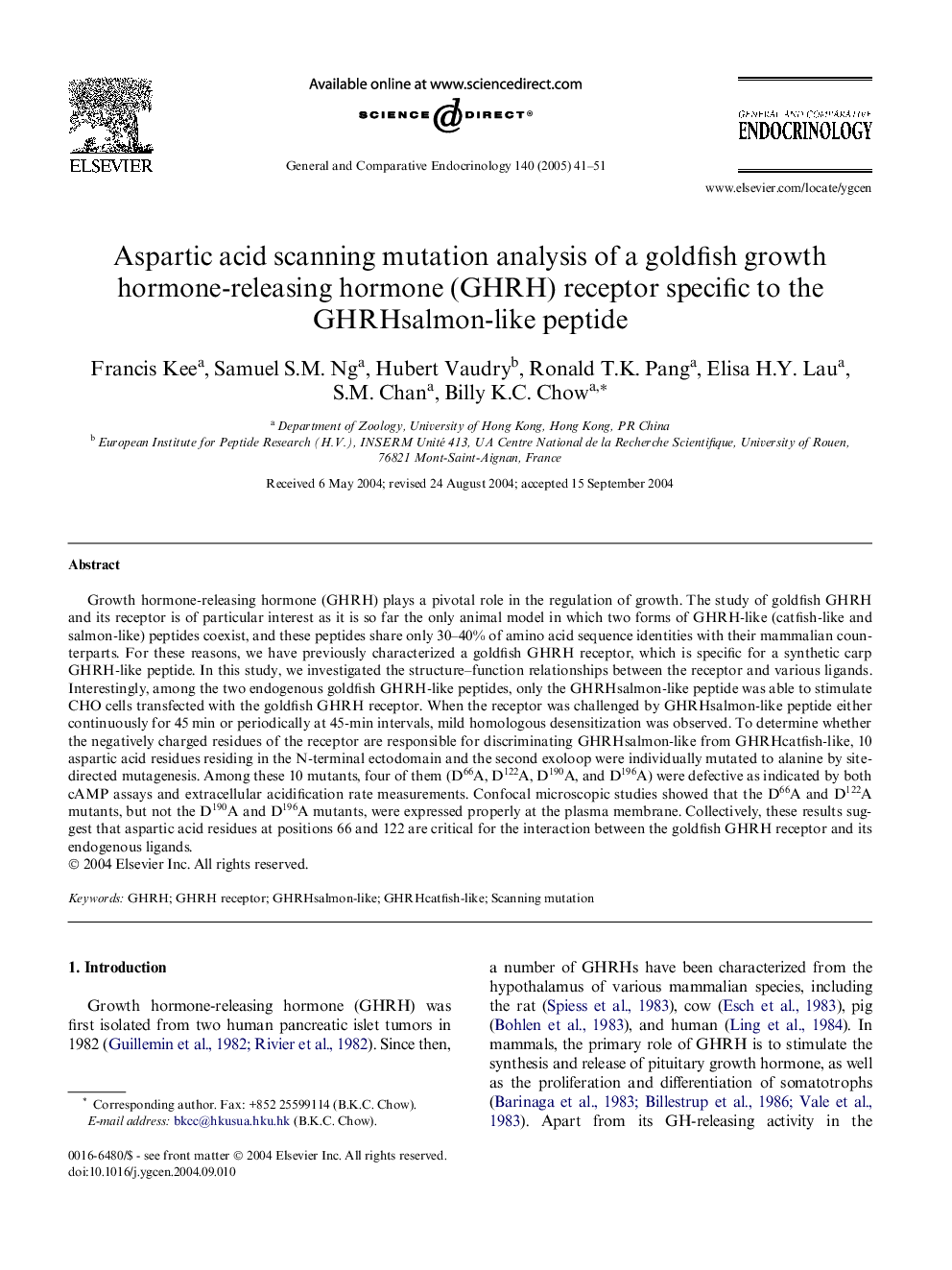| کد مقاله | کد نشریه | سال انتشار | مقاله انگلیسی | نسخه تمام متن |
|---|---|---|---|---|
| 9113300 | 1156223 | 2005 | 11 صفحه PDF | دانلود رایگان |
عنوان انگلیسی مقاله ISI
Aspartic acid scanning mutation analysis of a goldfish growth hormone-releasing hormone (GHRH) receptor specific to the GHRHsalmon-like peptide
دانلود مقاله + سفارش ترجمه
دانلود مقاله ISI انگلیسی
رایگان برای ایرانیان
کلمات کلیدی
موضوعات مرتبط
علوم زیستی و بیوفناوری
بیوشیمی، ژنتیک و زیست شناسی مولکولی
علوم غدد
پیش نمایش صفحه اول مقاله

چکیده انگلیسی
Growth hormone-releasing hormone (GHRH) plays a pivotal role in the regulation of growth. The study of goldfish GHRH and its receptor is of particular interest as it is so far the only animal model in which two forms of GHRH-like (catfish-like and salmon-like) peptides coexist, and these peptides share only 30-40% of amino acid sequence identities with their mammalian counterparts. For these reasons, we have previously characterized a goldfish GHRH receptor, which is specific for a synthetic carp GHRH-like peptide. In this study, we investigated the structure-function relationships between the receptor and various ligands. Interestingly, among the two endogenous goldfish GHRH-like peptides, only the GHRHsalmon-like peptide was able to stimulate CHO cells transfected with the goldfish GHRH receptor. When the receptor was challenged by GHRHsalmon-like peptide either continuously for 45Â min or periodically at 45-min intervals, mild homologous desensitization was observed. To determine whether the negatively charged residues of the receptor are responsible for discriminating GHRHsalmon-like from GHRHcatfish-like, 10 aspartic acid residues residing in the N-terminal ectodomain and the second exoloop were individually mutated to alanine by site-directed mutagenesis. Among these 10 mutants, four of them (D66A, D122A, D190A, and D196A) were defective as indicated by both cAMP assays and extracellular acidification rate measurements. Confocal microscopic studies showed that the D66A and D122A mutants, but not the D190A and D196A mutants, were expressed properly at the plasma membrane. Collectively, these results suggest that aspartic acid residues at positions 66 and 122 are critical for the interaction between the goldfish GHRH receptor and its endogenous ligands.
ناشر
Database: Elsevier - ScienceDirect (ساینس دایرکت)
Journal: General and Comparative Endocrinology - Volume 140, Issue 1, 1 January 2005, Pages 41-51
Journal: General and Comparative Endocrinology - Volume 140, Issue 1, 1 January 2005, Pages 41-51
نویسندگان
Francis Kee, Samuel S.M. Ng, Hubert Vaudry, Ronald T.K. Pang, Elisa H.Y. Lau, S.M. Chan, Billy K.C. Chow,